This article is mainly about the relevant introduction of the battery simulator, and focuses on the principle and advantages of the battery simulator in detail.
Battery simulatorThe battery simulator is specially developed for the new energy electric vehicle industry's motor controllers, drive motors, and vehicle test experiments. It is a device used to replace power batteries. Regenerative power grid refers to: the use of advanced IGBT devices and phase amplitude control PWM algorithm can be used to improve the deceleration and braking ability of the inverter, and at the same time, the energy generated by the motor during the braking process and input to the inverter is fed back to the power grid. While satisfying the effective braking of the inverter, it can recycle more than 95% of the regenerative electric energy. I know a battery (capacitor). The following is an introduction. I hope it can help you! 1. Product introduction Galaxy Tiantao TES series battery (capacitor) simulator is an IGBT-type battery (capacitor) simulator with high power factor and high precision programmable. Adopt full digital control, high control precision, fast response speed and wide output adjustment range. It has the dual functions of power battery simulation and precision power supply and feed, and is widely used in battery pack charging and discharging testing, charging pile testing, electric vehicle motors, transmission systems, powertrain testing and other fields. The system adopts AC-DC and DC-DC bidirectional conversion two-stage architecture, which can effectively stabilize the fluctuation of the bus voltage during sudden load loading and unloading, thereby improving the dynamic response time of the whole machine output. AC-DC bidirectional conversion adopts four-quadrant SPWM rectification technology, energy flows in both directions, the power factor is as high as 99%, and the grid-connected harmonic pollution is small. The DC-DC bidirectional conversion adopts high frequency circuit, which has fast output response and high precision. It can fully simulate the volt-ampere characteristics of various battery packs according to user needs, and flexibly test various battery-powered equipment. 2. Product features 1) Adopt DSP+ARM digital control chip, full digital control 2) Adopt AC-DC bidirectional, DC-DC bidirectional two-stage conversion, IGBT power device, reliable and advanced technology 3) Adopt high-efficiency power frequency isolation transformer, DC The side output is isolated from the AC side power grid. 4) The DC side voltage range is wide, adapting to a variety of voltage ranges for battery system testing. 5) With its own energy consumption protection unit, when the feedback energy is large, it will automatically switch to the energy consumption module to ensure the entire System stability 6) Four-quadrant control, high input power factor, up to 0.99 under rated power, no harmonic pollution to the grid 7) Pure sine wave of discharge energy is fed back to the grid, current harmonic <3% (rated power), recovery Efficiency is above 90% 8) It has fault protection and alarm functions such as battery reverse connection, over power, over current short circuit, over temperature, grid power failure (islanding), grid over voltage and under voltage, grid over and under frequency, etc. 9) Support power failure data protection And test connection function 10) Equipped with fully functional upper computer software, easy to operate, with functions such as programming test, working condition simulation, data storage, data curve processing, etc., which is greatly convenient for users to operate. 11) Open protocol and support third-party command control options Type and application 01, TES series battery (capacitor) simulator has two basic functions DC power output function
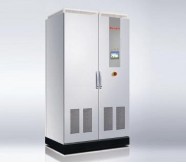
â—Multiple output modes with constant voltage, constant voltage current limit, and constant power
â—DC two-way flow, support motor test energy back irrigation
â—Support programming test output battery simulation function
â—Battery charging characteristics simulation function
â—Battery discharge characteristic simulation function
â—Battery SOC characteristic simulation function
â—Battery internal resistance, temperature characteristic simulation function 02, TES series battery (capacitor) simulator is suitable for the following occasions
â—Testing of electric vehicle motors and controllers; testing of electric vehicle transmission systems and powertrain systems
â—Special electric vehicle motor and controller test
â—Special electric vehicle transmission system and powertrain system test
â—Testing of ship's electric drive and electric drive system
â—Motor system test
â—Charger, charging pile test
â—Converter test of energy storage system
â—Charge and discharge test of battery pack and battery pack; charge and discharge test of capacitor and super capacitor
â—UPS, EPS system test
â—DC screen system test
â—Replace ordinary DC power supply as test power supply
â—Replace the real battery power supply test TES series battery
What are the advantages of a battery simulator to simulate a batteryWhen developing battery-powered equipment, R&D engineers need to preset a large number of batteries to various states of charge when only batteries are used, which consumes a lot of time. In fact, we can use a battery simulator to avoid such a long battery preparation time. The battery simulator can shorten the test setup time and create a safer test environment. Compared with the test using a real battery, the simulator can provide repeatable test results. Let's take a look at the benefits of using the simulator.
Safer testing
Batteries, especially the newer lithium-ion designs, contain higher stored energy. Under normal operating conditions (such as temperature, charge rate, discharge rate), the battery can be used safely. But during the test, some unexpected situations may occur. In the design stage, the device under test may not work properly, causing the battery to be overcharged or overdischarged. To make matters worse, the device under test may fail or enter an unexpected state, which may draw excessive current from the battery, which may cause risks such as fire, explosion, and chemical leakage.
In contrast, compared to a real battery, the simulator is a safer choice. The battery simulator contains electronic protection circuits, such as overvoltage and overcurrent protection, which can interrupt the test when there is a problem with the test. Remove the real battery from the test, and the failure of the device under test will not cause battery-related hazards.
Good repeatability
Continuously cycling the battery may cause inconsistent test results and shorten battery life. When manually adjusting the battery to the required state of charge, it is difficult to ensure the exact state of charge. Under normal circumstances, by fully discharging the battery, and then recharging the battery to the desired state of charge. This leads to additional recycling of the battery and accelerates the aging of the battery. The performance of the battery will change over time, and R&D engineers cannot guarantee that the aging battery can be charged to the ideal state of charge. Therefore, testing with aged batteries may produce inaccurate results.
Compared to testing with real batteries, the simulator can get more consistent and repeatable test results. It eliminates uncertain factors related to battery aging and can determine the state of charge of the battery.
to sum up
Using a battery simulator can accelerate test results, enhance safety, and provide more consistent test results.
Application of battery simulatorWith the growing expansion of the battery industry, battery testing has also been paid more and more attention. Compared to using a real battery for testing, testing the battery by simulating battery characteristics has many advantages. First of all, the simulated battery can effectively reduce the test time, provide reproducible test results and create a safe test environment. In addition, by testing the battery temperature and aging test, the preparation time can be reduced, and factors such as operator error and result deviation can be avoided.
In response to the needs of the industry, ITECH recently launched several new battery simulator power supplies to meet market needs, IT6400 bipolar DC power supply/battery simulator and IT6500C high-power bidirectional DC power supply. The IT6500C series has dual-quadrant current output capability, seamless switching across quadrants, and is suitable for rapid battery charging and discharging. With the optional power dissipator, the current absorption capacity can be increased to 100%, and the power absorption expanded by 300% to meet the needs of higher power discharge testing. It is widely used in energy storage equipment such as batteries, battery packaging, and battery protection boards. test. Let's take a closer look at the advantages of using these two battery simulators to test the battery. Due to its unique current bipolar design and variable output impedance, IT6400 is suitable for charging and discharging various portable batteries. It can also simulate the charging and discharging characteristics of the battery and assist in other tests.
Using a battery simulator to test the battery can greatly reduce the test time
In actual testing, engineers often need to be prepared for every step of the operation to test a real battery. For example, it usually takes a long time to charge or discharge the battery first, then stop working, and finally perform the test. Using the battery simulation function of IT6412 and IT6500C to test the battery can effectively shorten the test time, reduce the complicated operation preparation and the complicated test process and time required when using the real battery test.
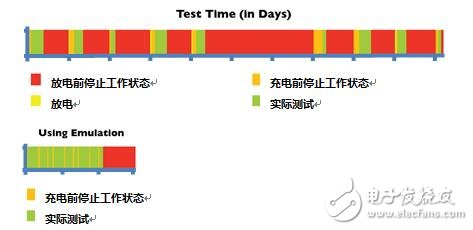
Figure 1: Comparison of real battery test and simulated battery test
The above figure 1 shows the comparison between the data obtained by the customer using the real battery for 9 consecutive days of testing and the test data obtained by the test instrument with battery simulation function. Through the comparison, we can find that the same test purpose is compared with the real battery. , Using a test instrument with battery simulation function to test can reduce the test time by about 70%.
Using a battery simulator to test the battery can provide repeatable test results
As the use time increases, the performance of the battery will also change, eventually leading to the exhaustion of the battery, and the battery has to be replaced. So we say that battery capacity, internal temperature, cycle life, etc. are all factors that affect limited battery life.
Manually test the real battery, because the long-term operation must also include the rest time of the operator, resulting in inaccurate test results. Using the battery simulation function of IT6412 and IT6500C to test the battery can provide consistent and repeatable test results. Unlike those real battery tests, battery replacement and operator error during the test will result in different test results.
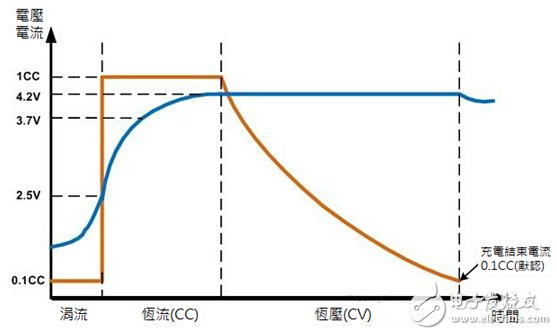
Figure 2: Lithium battery charging curve
Use battery simulator to test battery can improve safety
In daily tests, although the battery is safe to operate within the normal range, because the battery is also a high-energy device, there are still certain risks. These risks include exposure to harmful gases, fire, explosion, or corrosive chemicals Products and so on. Based on safety considerations, there will be a series of safety policies that require testing and monitoring during battery testing. Therefore, using the battery simulation function of ITECH IT6412 and IT6500C can create a test environment without any hidden dangers while highly simulating battery characteristics. In addition, the battery simulation function can also simulate and verify the reaction of the component under test when the battery exceeds the normal operating range.
In addition, some extreme test conditions such as over-discharge or over-charge of the battery may also cause unpredictable risks and safety hazards. The safety protection performance of lithium battery includes three aspects: overcharge protection, overdischarge protection, and short circuit protection. According to the test requirements of the national standard GB/T18287-2000, the change of the protection current and the response time of the battery under the conditions of overshoot, overdischarge and short circuit are measured. Since the time of the over-protection moment and the short-circuit response moment is very short, usually at the level of hundreds of microseconds, there are strict requirements for the power response speed of the test. For example, the ITECH IT6412 power supply is a high-precision linear power supply with ultra-fast dynamic response, and the response time is less than 50us when the 50%-100% LOAD is restored to 50 mV. Fully meet the ms-level response test requirements of lithium batteries.
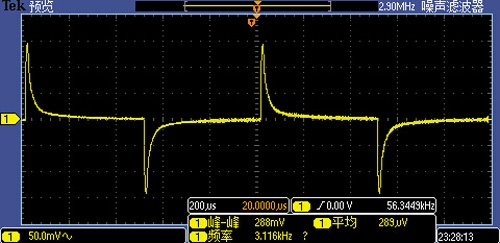
Figure 3: IT6412 dynamic response time curve
Using simulated battery test
IT6400 bipolar DC power supply/battery simulator and IT6500C high-power bidirectional DC power supply both provide an electronically programmable battery simulation mode, which can simulate the charging and discharging state of any battery. Just like a real battery, IT6400 and IT6500C can absorb or output current while maintaining voltage. The voltage and resistance are programmable, and can demonstrate any required state at any time, stopping battery charging or discharging before testing. Safely repeat the extreme conditions of overcharged or over-discharged batteries in order to test how the component under test reacts to the battery under such conditions.
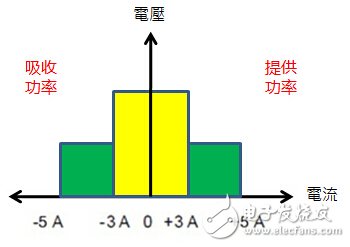
Figure 4: Bipolar schematic diagram of IT6412
In particular, the IT6500C series (1800W-30KW) as a high-speed bipolar power supply has a priority function, which can realize high-speed source current and current-carrying mode conversion. It avoids the transient jump and discontinuity when the traditional bipolar power supply realizes the positive and negative current switching. In this way, it performs fast and continuous seamless switching between the output current and the absorption current, effectively avoiding voltage or current overshoot, and is widely used in the testing of energy storage equipment such as batteries, battery packaging, and battery protection boards. With IT-E500 series power dissipator, IT6500C can provide greater discharge capacity, each IT-E500 can provide up to 3KW current absorption capacity, and support multiple power dissipators in parallel, the maximum can be up to 90KW, The current absorption capacity is extended to 100%, and the power absorption is extended to 300% to meet the needs of more power discharge testing.
Using the battery simulator IT6400 and IT6500C to simulate battery products will not only shorten the test time, get the test results quickly, and provide the same test as the real battery, but the difference from the real battery test is that the battery simulator can also provide Test components provide safe testing and reusable rates.
Concluding remarksThis is the end of the related introduction about the battery simulator. Please correct me if there are any deficiencies.
Related reading recommendations: ITECH Programmable Battery Simulator Solution
Related reading recommendations: TL431-based electric vehicle multi-segment series lithium battery simulator
Incremental encoders provide speed, direction and relative position feedback by generating a stream of binary pulses proportional to the rotation of a motor or driven shaft. Lander offers both optical and magnetic incremental encoders in 4 mounting options: shafted with coupling, hollow-shaft, hub-shaft or bearingless. Single channel incremental encoders can measure speed which dual channel or quadrature encoders (AB) can interpret direction based on the phase relationship between the 2 channels. Indexed quadrature encoders (ABZ) are also available for homing location are startup.
Incremental Encoder,6Mm Solid Shaft Encoder,Hollow Rotary Encoder,Elevator Door Encoder
Jilin Lander Intelligent Technology Co., Ltd , https://www.jilinlandermotor.com